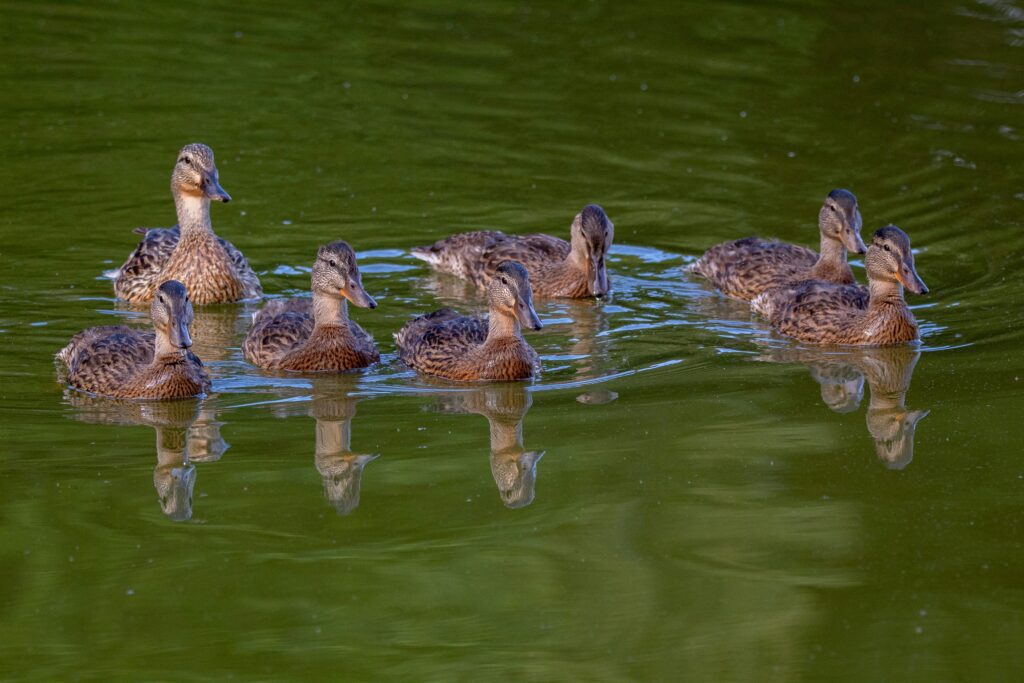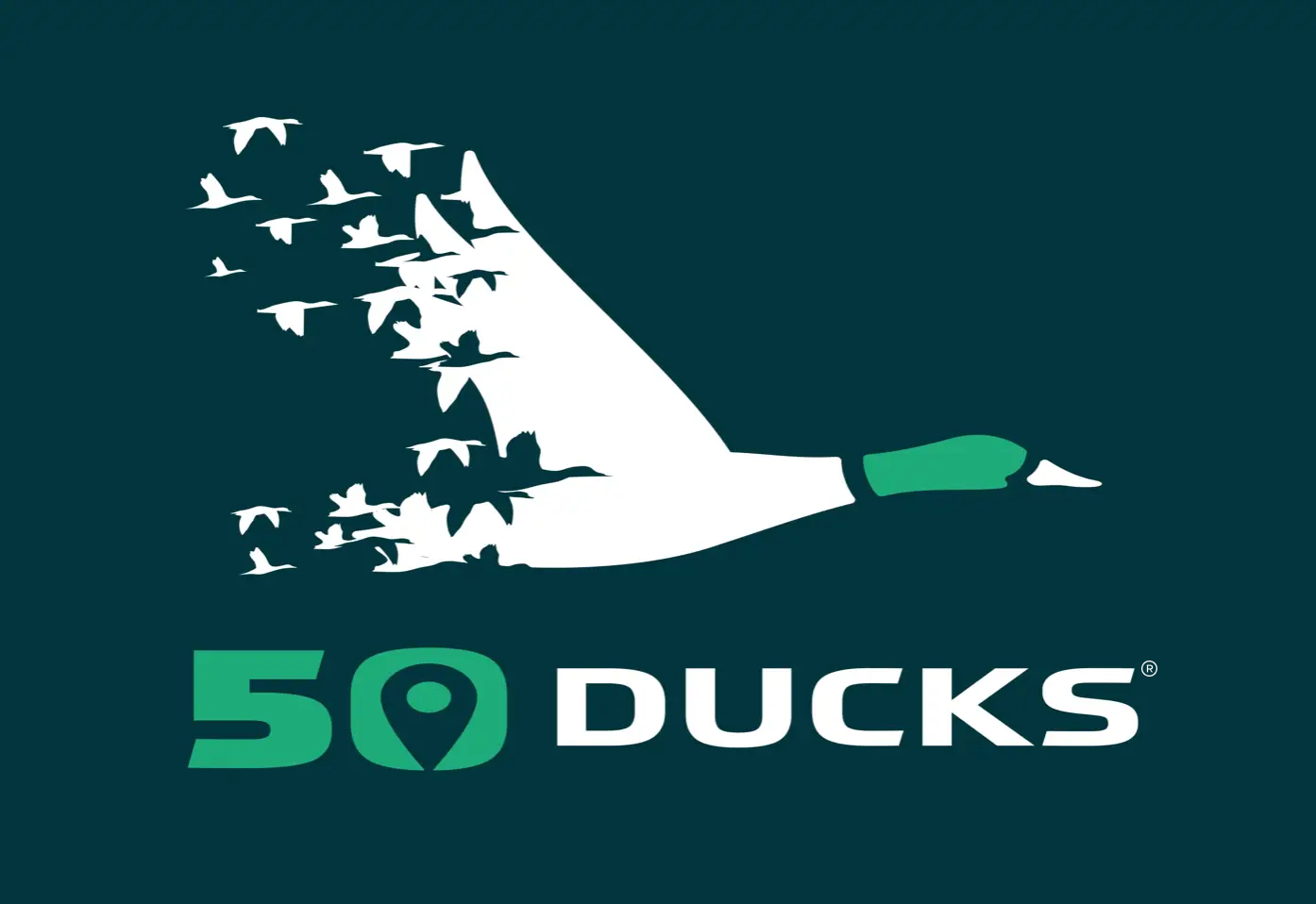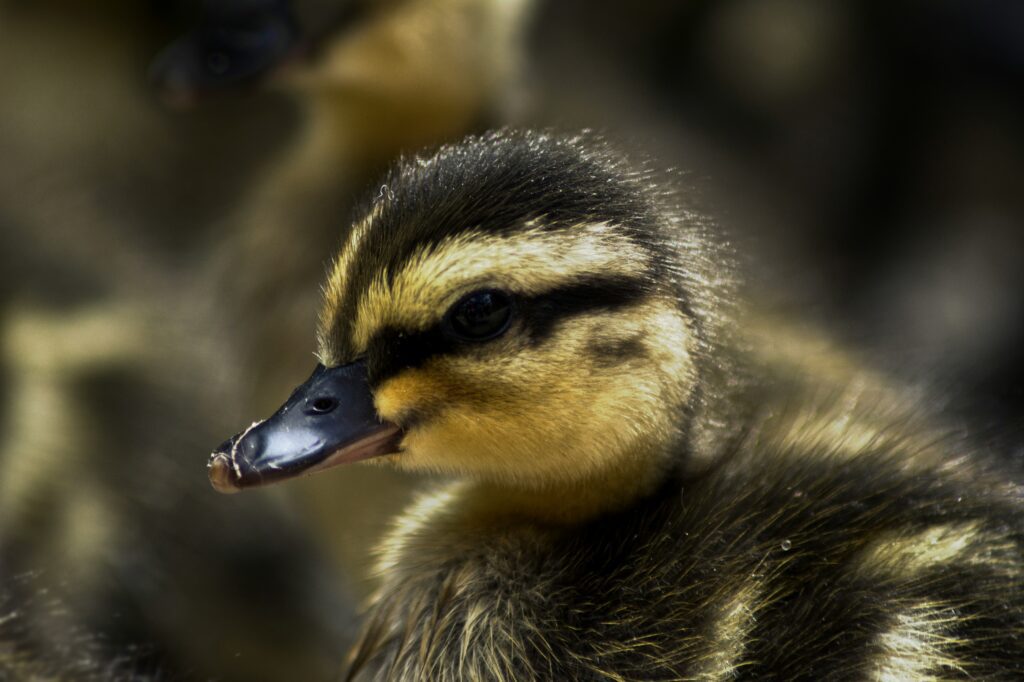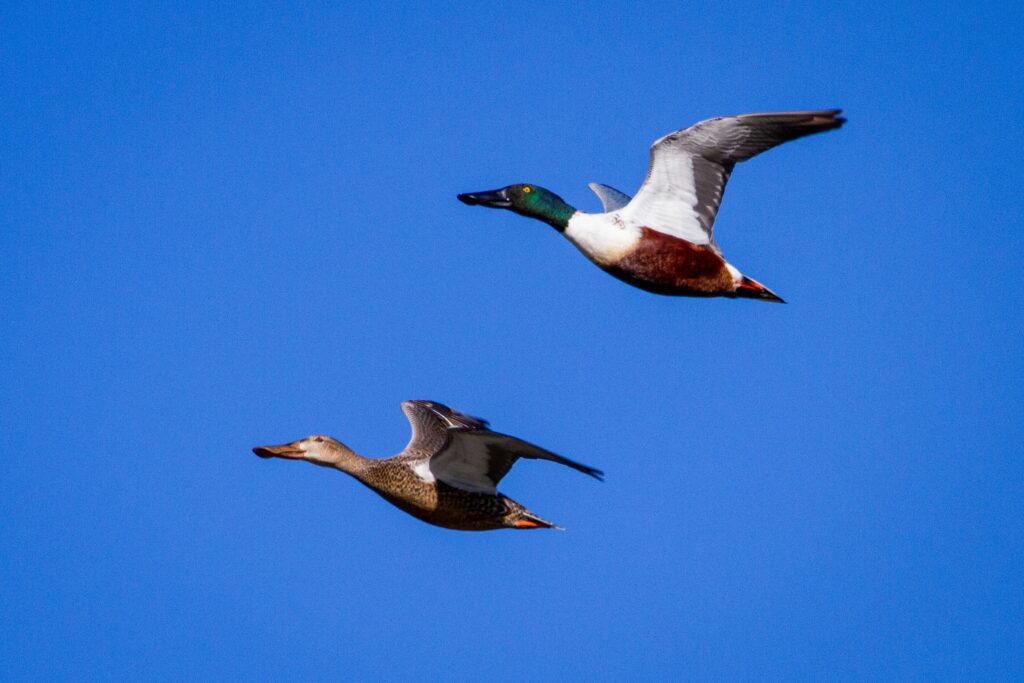10 Interesting Facts About Ducks
Greer Smith
January 22, 2024

Ducks, often associated with quacks and playful antics, hold a deeper allure beyond their audible charm. In the realm of nature, these feathered beings are remarkably diverse. There are over 100 distinct species that each exhibit unique duck behaviors.
From dabbling ducks dipping their bottoms into the water while feeding to perching ducks nesting in lofty branches, their ecological significance is profound. Our wetlands and natural habitats benefit from ducks as they prevent fragmentation and bring new life wherever they land.
Here are ten interesting facts about ducks that go beyond the quack and never cease to amaze:
1. Ducks Do More Than Quack
When examining the vocal repertoire of ducks, the iconic quack is just the tip of the iceberg. Beyond the stereotypical quack of a female mallard, ducks showcase a nuanced communication system. During courtship, the female’s quacks take on paired forms, while males contribute with quieter, rasping calls.
Ducks also make hissing, whistling, and grunting sounds, distinguishing various duck species. Remarkably, the vocalizations are more than mere noise. They act as a gender identifier, with females exhibiting louder calls.
Different breeds even adapt to urban environments, displaying regional accents in their quacks and honking or quacking louder to overcome the hustle and bustle of the city.
2. Ducks Preen Themselves With Oil
Preening is part of the daily routine of ducks and is a vital component of self-maintenance. All breeds possess a uropygial gland near their tail. Using their bills, they dip into the gland and begin the meticulous process of spreading the wax-like, oily substance over their feathers.
For ducks and waterfowl, this isn’t just an aesthetic routine. It’s a waterproofing strategy that turns water into an ally. As these avian engineers distribute preen oil from head to tail, water effortlessly rolls off their backs, leaving them dry, warm, and buoyant.
Clean feathers do more than assure aerodynamic efficiency. They also present a well-groomed appearance to potential mates. Beyond the cosmetic, this duck behavior is a barometer of health, protecting ducks against parasites, bacteria, and infections.
3. Ducks Have Layers of Down Feathers
Beneath the exterior charm of ducks lies a strategic layering system. Each breed has three main feather types. Those are the flight, contour, and vital down feathers. Situated closest to the skin in the chest and belly regions, down feathers form a loose structure that traps air, insulating ducks against heat loss and ensuring buoyancy in water.
Vital for their survival, down feathers in ducklings are initially provided by the mother, who plucks her own to line and cover the eggs. The soft layer ensures the ducklings’ warmth in their early stages. This intricate mesh of feathers isn’t merely a marvel of nature; it’s one of the ten interesting facts about ducks geared towards survival.
While these fine feathers are essential for survival, humans have found applications for everyday life. We manufacture and fill pillows, cushions, and comforters with duck body feathers. Many fashion items such as boas, earrings, masks, and accessories utilize down feathers.
4. Ducklings Hatch Within 30 Days
After female ducks lay their eggs, the countdown to new life becomes an efficient and synchronized process. For most species, ducklings emerge with remarkable efficiency, hatching within a concise 30-day window. The incubation period, averaging 28 days for duck eggs, involves a meticulous process guided by the mother’s brood patch (a specialized area of bare skin that applies vital heat to the clutch).
This careful warming process ensures synchronized hatching, a duck behavior that proves critical for vulnerable ducklings. The coordinated emergence produces a brood that safeguards them against predators, as solitary ducklings face daunting odds when left alone without maternal protection.
These initial moments reveal not just a struggle for survival. They are an act of unity in the face of adversity. The synchronized hatching and the resilient journey of ducklings make this one of the ten interesting facts about ducks that are truly awe-inspiring.
5. Ducklings Talk to Each Other Before Hatching
In the hidden world within the eggshell, ducklings partake in pre-hatch communication to orchestrate a synchronized emergence into the world. As the hatching day nears, the intricate dialogue among siblings involves audible clicking sounds that serve as signals for development.
These sounds, transmitted through the eggshells, synchronize movements crucial for breaking free. Just before hatching, the embryos produce distinctive clicking and peeping sounds. This duck behavior is known as “pipping.” The auditory symphony isn’t one-sided. The mother duck, in response, contributes soft clucking sounds, fostering a unique form of communication.
This early dialogue isn’t merely a biological occurrence. It’s a cornerstone of imprinting, ensuring that ducklings recognize and follow their mother’s voice. After hatching, a seamless bond solidifies with images of their mother and siblings. As a result, ducklings will instinctively follow her when it’s time to venture from the nest.
6. Ducklings Walk Within Hours of Hatching
Ducklings defy expectations, showcasing rapid motor skill development within hours of hatching. Born after a 28-day incubation period, ducklings emerge as precocial beings, ready to walk, swim, and fend for themselves almost immediately. While they must wait for their feathers to dry, usually around 4 hours, they can take their first steps and leave the nest.
This swift progression contrasts with other bird species, where fledglings typically take 13 to 14 days to achieve similar levels of mobility. The inaugural steps of ducklings hold significance beyond physical prowess. They mark the beginning of a journey. Upland-nesting hens, guiding their broods, traverse landscapes to access brood-rearing wetlands and hardwood forests.
As the ducklings learn to walk and waddle, group dynamics kick in, and ducklings follow each other closely. These first few hours complete the imprinting process and form the unity necessary for their early explorations. Duckling motor development, where quick strides signify physical readiness, makes this a remarkable addition to our top 10 interesting facts about ducks.
7. Ducks Can Fly As High as Airplanes
Against the beautiful backdrop of open skies, ducks showcase their aerial prowess, reaching altitudes that might surprise the casual observer. While the average migration altitude ranges from 200 to 4,000 feet, ducks are known to soar even higher. A mallard collided with a jet plane at an astonishing 21,000 feet, the highest recorded flight by North American waterfowl.
Not to be outdone, ruddy shelducks regularly navigate above 16,500 feet, occasionally surpassing 22,000 feet. Their flight capabilities are not merely about altitude; the sleek design of duck wings, reminiscent of a peregrine falcon, 50 Ducks has observed movements as fast as 80MPH! And in excess of 8,000 feet for our first tagged Blue-winged teal. Ducks regularly cover impressive distances, with some species flying non-stop for up to 14 hours. When we study the heights and speeds achieved by ducks, it’s hard to believe that they have relatively small wings. To overcome this limitation, they use rapid wing beats at a pace of approximately ten times per second. This migratory duck behavior separates them from other avian birds and is a testament to their remarkable flight capabilities.
8. Ducks Have Better Eyesight Than Humans
On our list of ten interesting facts about ducks, duck vision surpasses humans in multiple dimensions. Their unique ocular structure allows waterfowl to discern fine details at distances two and a half to three times farther than humans. Duck eyes are on the sides of their heads to provide a 360° field of vision in the horizontal plane, offering unparalleled peripheral awareness.
This panoramic perspective and independent eye control enable ducks to detect threats from any direction. Unlike humans with a 180° field of vision, ducks see the world simultaneously from multiple angles. Beyond mere acuity, ducks’ eyes, capable of perceiving a broad spectrum of colors, enhance their visual spectrum and span from near-ultraviolet to red.
The evolutionary adaptation of avian eyes extends further, with ducks exhibiting unique features, such as the ability to control the curvature of the cornea and lens. This remarkable adaptation allows diving ducks to match the refractive index of water, offering them a crystal-clear view beneath the surface.
9. Females Choose the Best Dancer for Mating
When the mating season rolls around, females emerge as discerning judges, selecting their mates based on elaborate displays performed by the males. During the breeding season, male ducks engage in specific courtship movements, from rhythmic head-bobbing to the dramatic Head-Up-Tail-Up pose, showcasing their prowess and feather attractiveness.
The grunt whistle, a symphony of low-frequency grunts followed by a high-pitched whistle, adds a melodic touch to the courtship theater. In response, females exhibit nod-swimming, a rapid glide with their necks held low, signaling readiness for courtship. This duck behavior encourages males to showcase their mating rituals, including the submissive “down-up” bowing motion.
The intricate ballet, accompanied by preening, calling, and swimming in circles, culminates in the female’s choice. She may nod, pump her head, or bob, signaling approval for her selected suitor. For bird enthusiasts, courtship dancing is a must-see event and one of the most popular of our ten interesting facts about ducks.
10. Ducks Are Sociable & Affectionate
Within duck communities, sociability and affection reign supreme. Ducks are inherently outgoing and find solace in the company of large groups, aptly named “paddlings” when afloat. They spend their days scouring for food in grassy expanses or shallow waters, while nights see them sleep huddled together, forming protective rafts to deter predators.
Their strength does not only lie in numbers. But in the intricate group dynamics that encourage vigilant community members to take turns watching for potential threats. This communal protection is evident as ducks walk in a line, each playing a role in the group’s safety.
Beyond survival, they exhibit affectionate duck behaviors akin to domesticated pets, expressing happiness with soft chirps and quacks, distinguishable from louder, more assertive calls. When greeting fellow ducks or trusted members of their flock, you will often see them engage in head-bobbing and tail-wagging, similar to a dog when it sees its owner.
Wrapping Up
In conclusion, our list of 10 interesting facts about ducks reveals hidden gems. From intricate preening rituals to sociable group dynamics, aerial prowess, and unique mating dances, it is easy to see why these creatures are so unique.
As proactive duck conservationists, we encourage everyone to participate in preserving natural habitats vital for waterfowl. Join us here at 50 Ducks to ensure a thriving future for ducks and the ecosystems they enrich.


